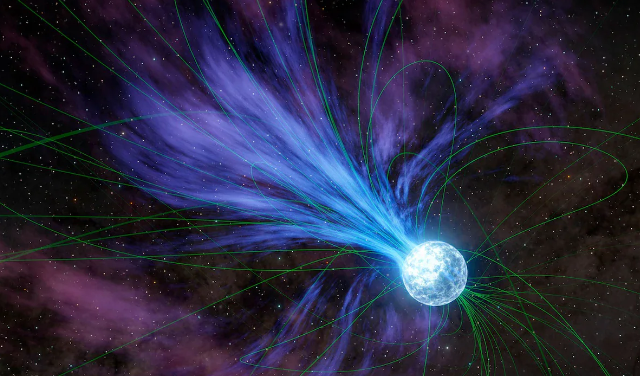A groundbreaking discovery has captivated the astronomical community: a powerful burst of radio waves, known as FRB 20220610A, has reached Earth after an incredible journey of 8 billion years. This signal is among the most distant and energetic ever observed.
Fast radio bursts (FRBs) are brief, intense pulses of radio waves lasting only milliseconds. Their origins remain enigmatic, with theories ranging from neutron stars to exotic celestial phenomena. The detection of FRB 20220610A provides a rare opportunity to study the universe’s distant past and the processes that occurred billions of years ago.
Dr. Stuart Ryder, an astronomer at Macquarie University, is leading the investigation into this cosmic enigma. His team is using advanced research techniques to uncover the source of FRBs and gain insights into fundamental cosmic processes. The full study on this discovery has been published in the journal Science.
FRBs were first discovered in 2007 and have since intrigued scientists with their mysterious nature. Some FRBs release as much energy in a fraction of a second as our sun generates over 30 years. These bursts may be linked to magnetars, the remnants of supernova explosions.
Astronomers used the Australian Square Kilometre Array Pathfinder (ASKAP) to detect and trace this FRB. ASKAP’s radio dishes enabled precise pinpointing of the burst’s origin. Following this, the European Southern Observatory’s Very Large Telescope identified the source galaxy, which is older and more distant than any previously recorded FRB source.
FRBs could help solve the cosmic puzzle of “missing matter.” There is a discrepancy between the amount of normal matter observed and the amount that cosmologists believe should exist. The missing matter might be located in the vast, diffuse regions between galaxies, making it hard to detect with conventional methods.
FRBs can “sense” ionized material in near-space, allowing scientists to measure matter hidden between galaxies. In 2020, Jean-Pierre Macquart developed the Macquart relation, a method using FRBs to trace this elusive matter. The detection of FRB 20220610A confirms this relation even for signals from halfway across the universe.
The discovery of FRBs and their ability to detect hidden matter offers a promising tool for solving the cosmic matter puzzle. FRBs allow us to measure elusive matter scattered throughout the cosmos, providing new insights into the universe’s structure and evolution.

